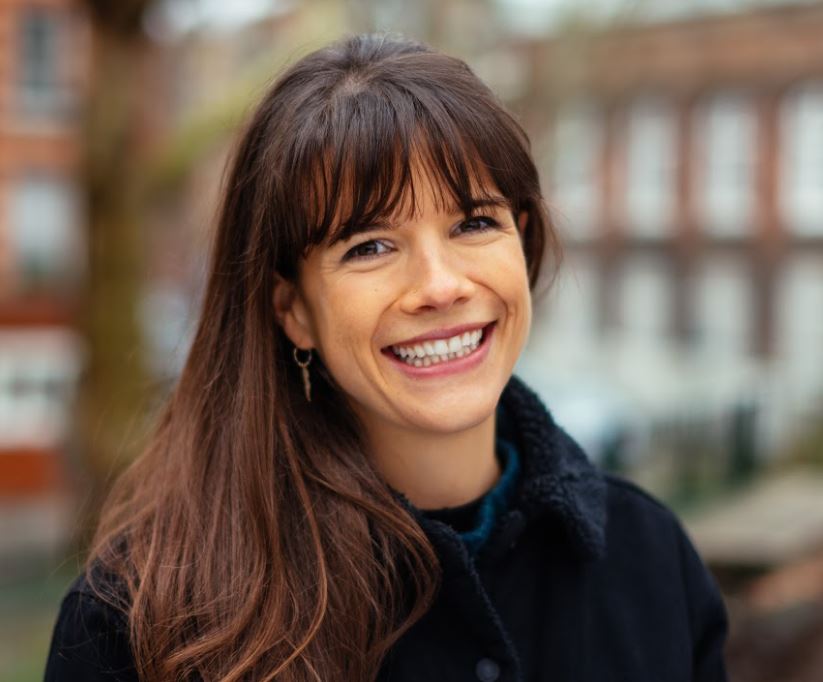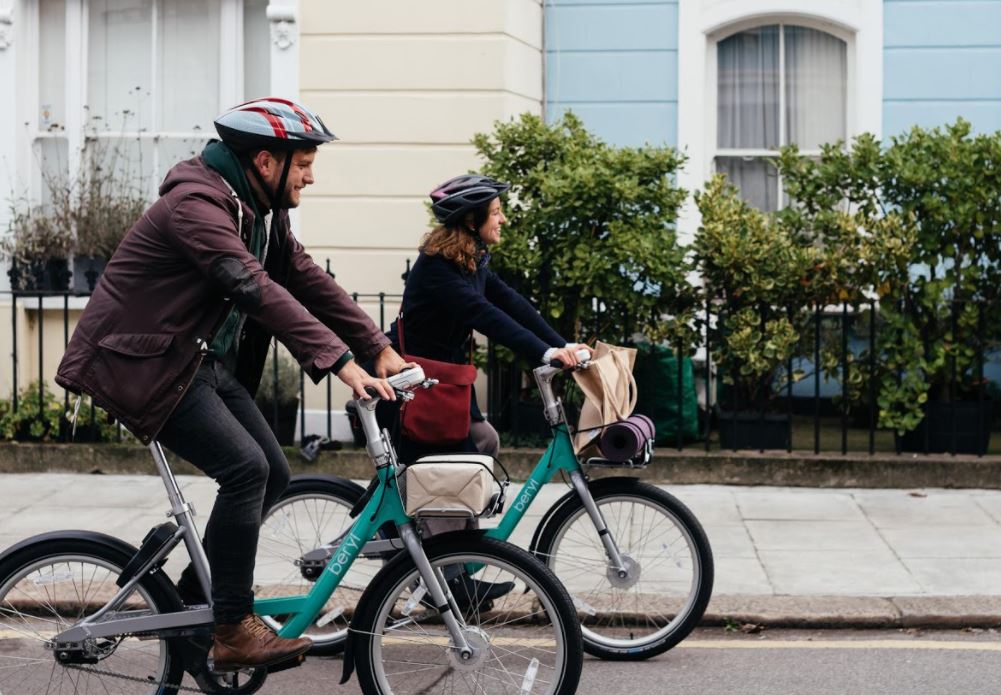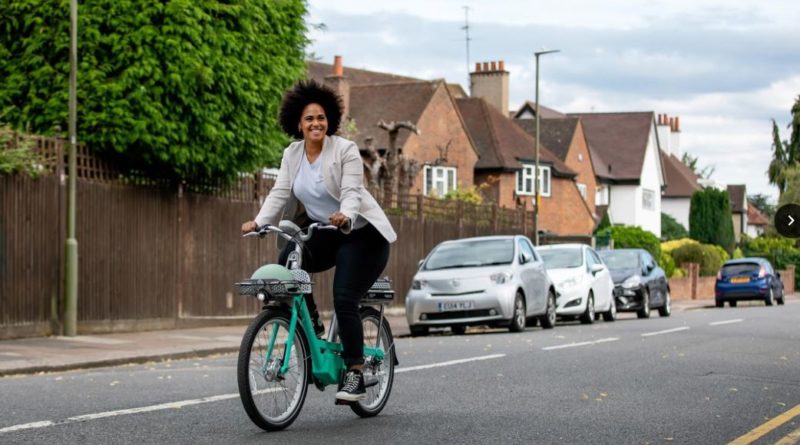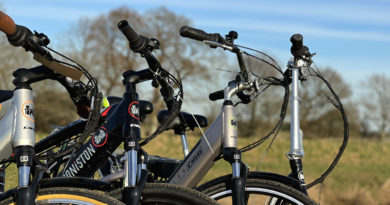Comment: how bike share schemes can help drive gender parity in cycling
Emily Brooke, founder and chair of Beryl, writes on how further roll out of bike share schemes could help drive gender parity in cycling and ultimately create a new wave of custom for bike shops…
 Rightly or wrongly, cyclists in this country have a stereotype. Frequently, cyclists are perceived as predominantly male, white and middle aged. In places, the data seems to support this, the proportion of women cycling in London is described by Transport for London as “relatively low” – 27% on most routes – while Sustrans figures show that women make up just 33% of cyclists in Greater Manchester.
Rightly or wrongly, cyclists in this country have a stereotype. Frequently, cyclists are perceived as predominantly male, white and middle aged. In places, the data seems to support this, the proportion of women cycling in London is described by Transport for London as “relatively low” – 27% on most routes – while Sustrans figures show that women make up just 33% of cyclists in Greater Manchester.
However, cycling’s demographic in the UK is changing, in fact, our world and cities are all changing faster than we ever thought possible. We saw during the first lockdown, an increasingly diverse variety of people taking to two wheels to take exercise or avoid public transport. The bicycle was an important tool for key workers, which Beryl and local councils supported, providing 10,000 free rides for NHS staff.
I have long believed that – like in other European countries – the demographic of those who cycle will only become more diverse through safe and continuous cycling infrastructure. Access to bikes – in convenient locations – is also important to get new people cycling. We are pleased to partner with cities that not only recognise the value of bike share, but the importance of changing their towns and cities to better accommodate people who, rightly, don’t feel comfortable going toe to toe with traffic.
As London’s Cycling & Walking Commissioner, Will Norman, noted, getting people cycling from backgrounds who are under represented will take a holistic approach. British Cycling’s policy adviser Chris Boardman, has described gender imbalance in cycling as a “deep issue”, and women are “a minority, not because of gender, but because they are more cautious of safety”. Both Mr Norman and Mr Boardman have been instrumental in instigating projects to address a lack of diversity, including cycle training courses, grants for community groups who do not typically cycle and promoting e-bikes, as well as expanded cycle routes.
While bike share has a broader demographic, typically, than cyclists using private owned bikes, the trend isn’t going in the right direction. According to CoMoUK’s 2019 Bike Share Survey, the percentage of female bike share users decreased to 37% – somewhat lower than in previous years.
As a woman that has had bicycles at the forefront of my working life for the past 10 years, this is deeply frustrating. However, I am optimistic that the percentage of female ridership for UK bike shares will have risen in 2020 as many rediscovered the power of the humble bicycle during the initial COVID-19 lockdowns. If this is achieved, the question then becomes, how do we sustain this into 2021 and can bike share be the best way to achieve gender parity in cycling?
The first is smart infrastructure. Though it would be very welcome, I know that not all roads across the UK can be paved blue and emblazoned with a white bicycle in 2021. However, we should remember that it was just a matter of weeks that local councils were able to take (not metaphorical, but real) – wands to their streets and create temporary cycle lanes that allowed children to safely cycle to school. Low traffic neighbourhoods started to provide a safe space for people to cycle more, without need for expensive traffic separation or road-redesigns. We saw a slither of what can be achieved if towns and cities tip the scales to follow the rhythm of humans and not cars.
If we want to see more women cycling, which can then in turn help bring a wave of new cyclists, it’s imperative we create infrastructure that is guided by women’s needs and habits. Ours and other bikeshare operator’s data suggests that there is an over representation of men cycling in city and town centres and women in residential areas. If bike share providers are redistributing bikes based on overall usage and councils are focused on city centre infrastructure, then we will be doing a huge disservice to the needs of female riders.
We are seeing many micromobility operators across bike share, but also e-Scooter, transition away from docking stations or free-floating to our model of smart parking. This allows operators to redistribute vehicles to areas where women are more likely to begin their journeys, but also operators and councils can be agile to adjust where the scheme’s bays need to be placed. We know this works as a recent survey across Beryl bikeshare schemes in the UK, showed 50% female and 48% male ridership in 2020.
 Women tend to be more aware and concerned of their travel patterns, be it for work, education or general life. Safe cycling environments need to start from residential areas, and not just the centre of town, so women and other less confident cyclists can start their journeys in a controlled environment. Initiatives like Low Traffic Neighbourhoods, as previously mentioned, are instrumental in helping us achieve this and converting other new cyclists.
Women tend to be more aware and concerned of their travel patterns, be it for work, education or general life. Safe cycling environments need to start from residential areas, and not just the centre of town, so women and other less confident cyclists can start their journeys in a controlled environment. Initiatives like Low Traffic Neighbourhoods, as previously mentioned, are instrumental in helping us achieve this and converting other new cyclists.
Research by Strava Metro and American news website Quartz, discovered that cycling infrastructure is more likely to impact female ridership than male. In 2018, New York decided to install protected lanes on two streets (43rd Avenue and Skillman Avenue), but leave a paint-only bike lane on nearby Queens Boulevard unaltered. Strava’s study analyzed 11,416 bike trips by women in Queens between 2015 and 2019. It found that in 2019 nearly 40% more trips were made by women on 43rd Avenue and nearly 50% more trips on Skillman, compared to a year previous. During the same time period, male ridership did not increase across those two streets.
Women aged between 30 and 49 are far more likely to escort their children to school. The infrastructure we place in and around residential areas therefore is going to have a disproportionate benefit to women. If we make this infrastructure feel safe, then we can start to switch more trips from car to bike; there are around 250,000 daily vehicle movements relating to the school run on any given weekday morning in the capital. Cities are increasingly creating school streets, which is a great step in the right direction, but we also need door-to-door safe routes and access to bikes for the community; this is where bike share can support.
Bikeshare’s other means of increasing female ridership is underway but needs to walk in step with the implementation of infrastructure. A potential reason for the gender gap in cycling is that women are more likely to trip-chain – to make multiple stops in a single outing. Data shows that women in the UK are more likely to carry out household and family related duties, in which normal bicycles are just not fit for purpose. Bikeshare operators can help provide solutions for more people by scaling the number of e-bikes or introducing cargo bikes to help make these journeys more conducive to cycling.
It’s going to take a lot of parties coming to the table to achieve gender parity in bike share. It is for all shared active transport stakeholders to be aware of the gender gap and understand the potential and need to convert women to new shareable alternatives. If we tip the scales in favour of mobility solutions that benefit women it will have a lasting effect on our wider community, regardless of gender.
Emily Brooke is founder and chair of Beryl, a British business providing a new model and innovative technology for micromobility schemes, as well as products for urban cyclists.



